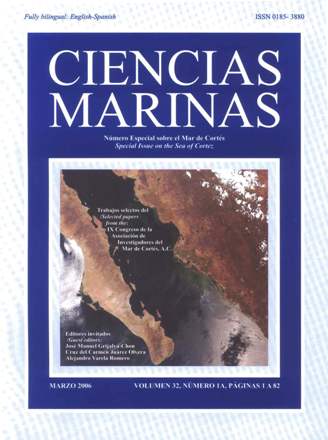Mangrove primary production at El Conchalito Estuary in la Paz Bay (Baja California Sur, Mexico).
Main Article Content
Abstract
The structure, litterfall production, and primary production of the mangrove stand at El Conchalito Estuary in La Paz Bay (Baja California Sur, Mexico) were studied during two annual cycles (1998–2000). The mangrove stand is composed of white mangrove Laguncularia racemosa (L), red mangrove Rhizophora mangle L, and black mangrove Avicennia germinans (L). The dominant physiognomy of the stand corresponded to fringe mangrove, characterized by a mean density of 2960 ind ha–1, height of 3.1 m, basal area of 10.2 m–2 ha–1, 2 species in 0.1 ha, and complexity index of 2.9. Annual estimated litterfall production was 805 g dry wt m–2 for L. racemosa, 509 g dry wt m–2 for R. mangle, and 444 g dry wt m–2 for A. germinans. Maximum primary productivity for the first two species was estimated between 1.8 and 3.5 t C ha–1 yr–1. The pattern of litterfall production showed a maximum rate at the end of the rainy season, during September and October.
Downloads
Article Details
This is an open access article distributed under a Creative Commons Attribution 4.0 License, which allows you to share and adapt the work, as long as you give appropriate credit to the original author(s) and the source, provide a link to the Creative Commons license, and indicate if changes were made. Figures, tables and other elements in the article are included in the article’s CC BY 4.0 license, unless otherwise indicated. The journal title is protected by copyrights and not subject to this license. Full license deed can be viewed here.

